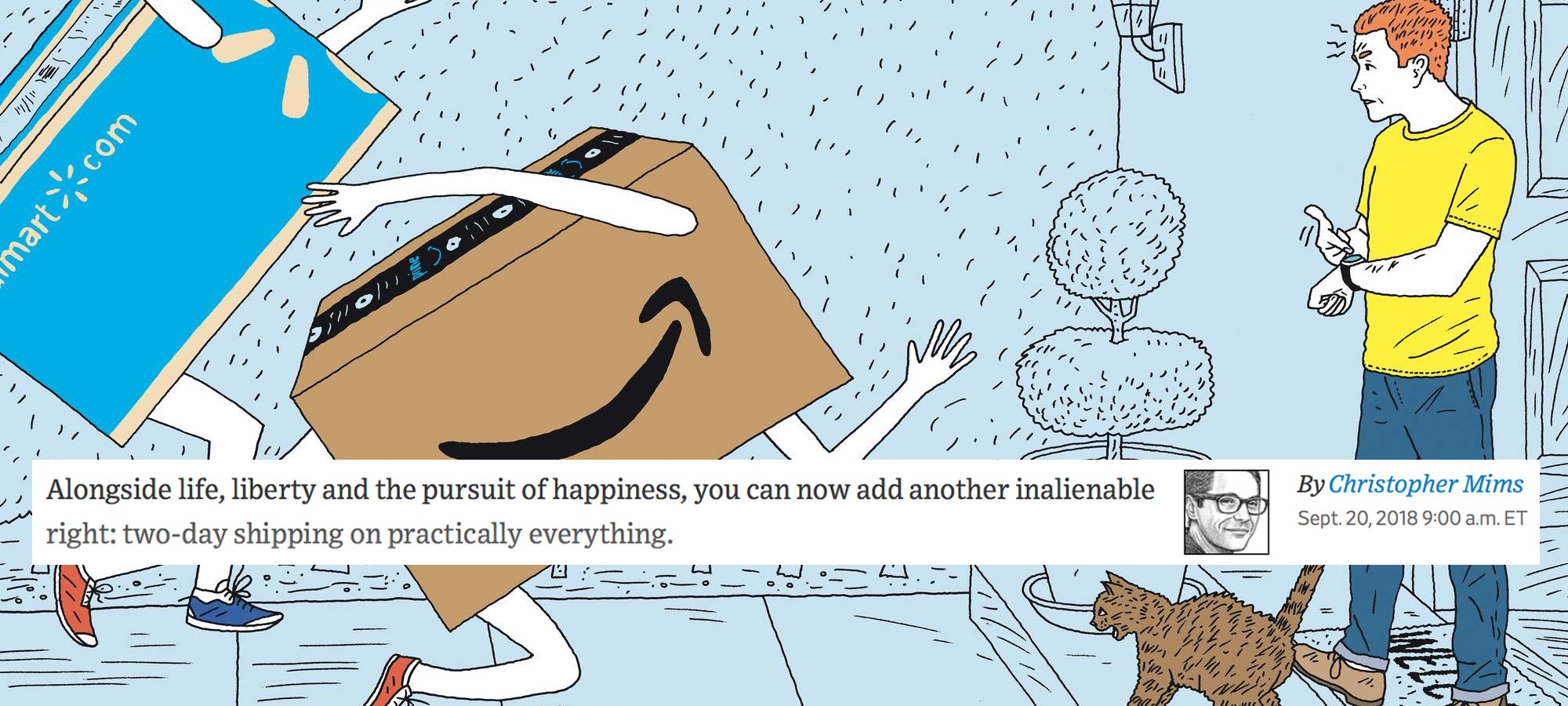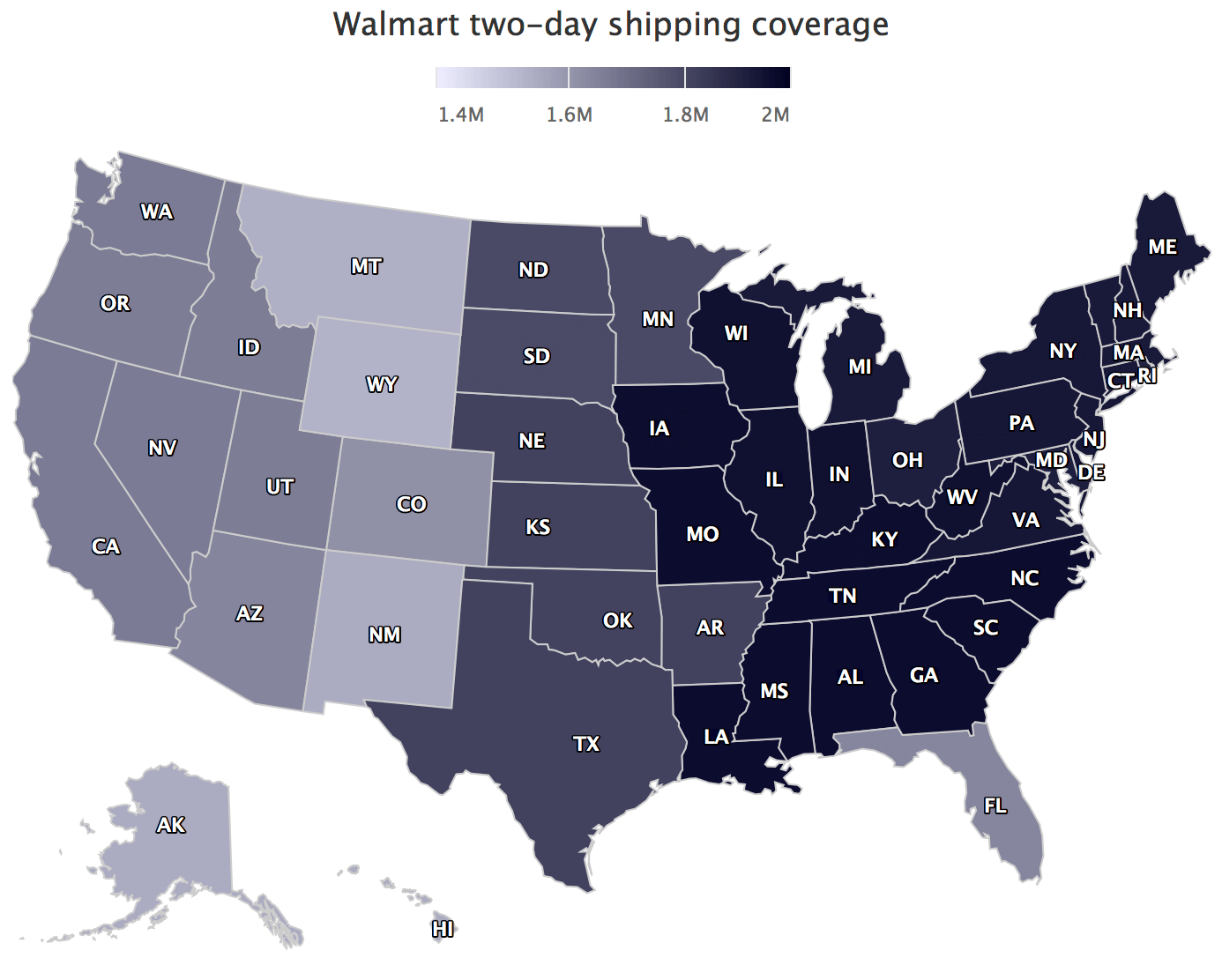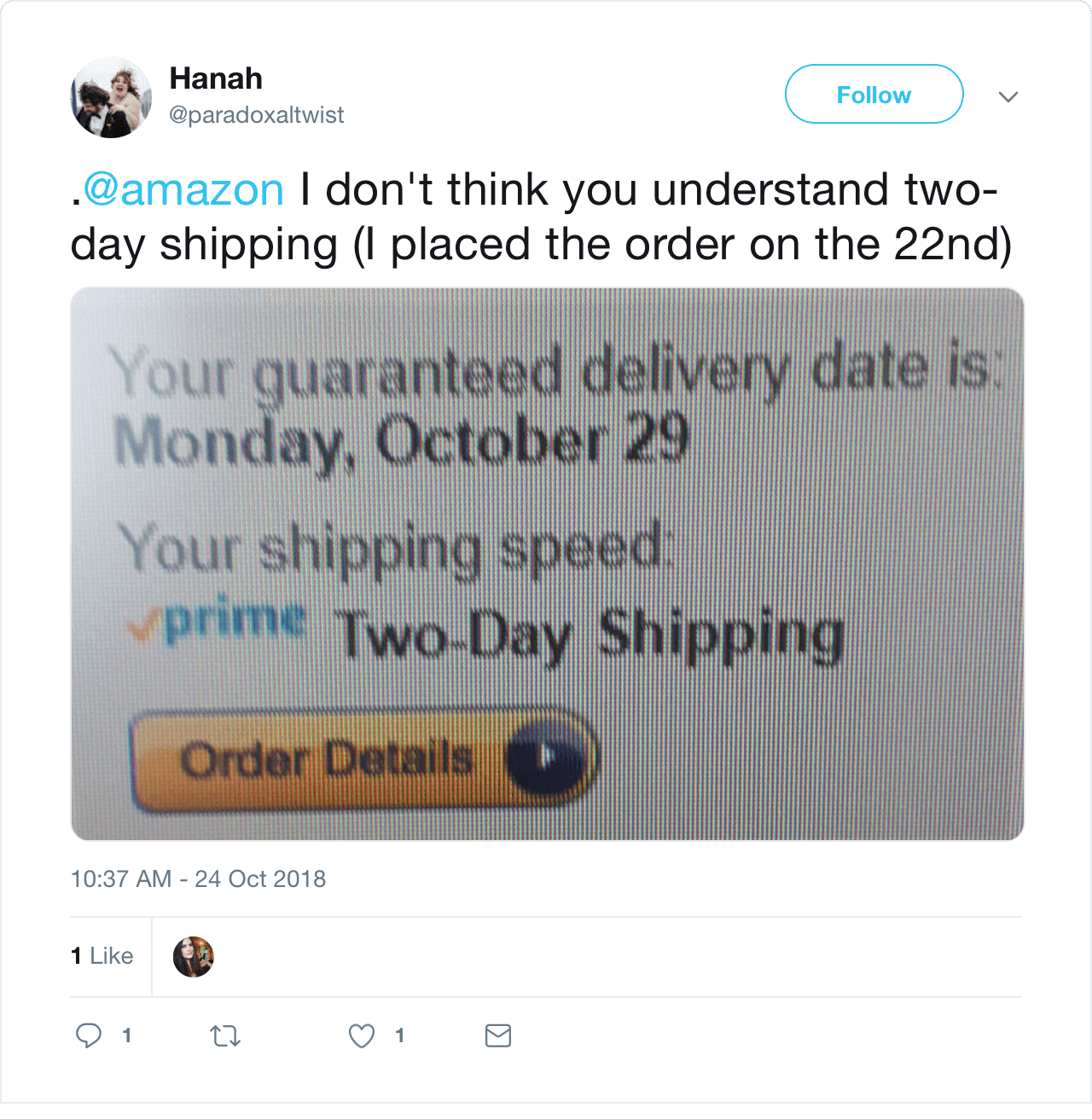Free two-day shipping is an inalienable right, as Christopher Mims of The Wall Street Journal put it, alongside life, liberty and the pursuit of happiness. This is mostly thanks to Amazon. Amazon launched Prime in 2005 and in thirteen years since has created a perception that two-day shipping is the standard every other retailer needs to meet too.

The truth is that achieving nationwide free two-day shipping is hard and expensive. It requires inventory planning and mirroring, a warehouse network, and sophisticated technology to manage it. And all of that complexity needs to happen at a price point which still allows it to be marked as “free”. Scale is essential too. None of this can be done by mom-and-pop shops or small retailers without the help of someone who has aggregated many of them.
“In today’s world of e-commerce, two-day free shipping is table stakes.”
– Marc Lore, president and CEO of Walmart U.S. eCommerce
Walmart, the largest retailer in the country with close to 5,000 stores locations and close to ten e-commerce fulfillment centers, can’t do it perfectly. According to our research customers on the east cost have access to 2 million products with two-day shipping, but on the west coast the availability is 20% smaller at 1.6 million products. In some states like Montana or Wyoming only 1.4 million products are available with two-day shipping.

Walmart launched free two-day shipping in January 31st, 2017. It is free on orders of $35 or more without having to pay a membership fee. Their delivery network has the potential to reach 99% of the population in two days or less, but that first requires having the right inventory at the right parts of the country. That’s why New York, NY has exactly 1,987,472 products available on two-day shipping, while Los Angeles, CA has 1,661,638 and Houston, TX has 1,784,897. Each of those cities is one of the largest cities in the nation, and yet they are thousands of miles apart.
Amazon doesn’t do perfect two-day coverage either. Even if, according to Amazon, the company operates more than 75 fulfillment centers and 25 sortation centers across North America. The Prime badge is displayed for products even when Amazon can’t deliver them in two-days. Amazon counts two-day shipping from the date the item actually shipped from a fulfillment center, not from when it was ordered. The difference is processing time, which is not always quick, sometimes involving transshipping between Amazon’s warehouses.

Social networks are full of frustrated Prime members upset about waiting for longer than two-days. Amazon does show the guaranteed delivery date before ordering, but few pay attention to realize that sometimes it estimates delivery multiple days in the future. And if they do, they get frustrated too.
This is not to say that most of the time most of the shoppers get the products they want in two days. Both on Amazon and on Walmart. But the times when they don’t and the cities in the nation where they don’t is why this is so hard. After all, two-day shipping is a marketing term. It’s about creating the perception that shopping on Walmart and Amazon means getting the product in two-days. That perception has only been getting stronger since Prime launched in 2005.
Most recently Target announced that it will offer free two-day shipping on most items, regardless of price, with no membership or minimum purchase required. To meet the perception Amazon has created Target will subsidize shipping costs to appear competitive. The retailer will offer free shipping through December 22nd, going back to $35 order minimum after that. It’s great to be hailed as “Target takes on Amazon”, but once the holiday sales are done with it’s probably wise to go back to reality.

